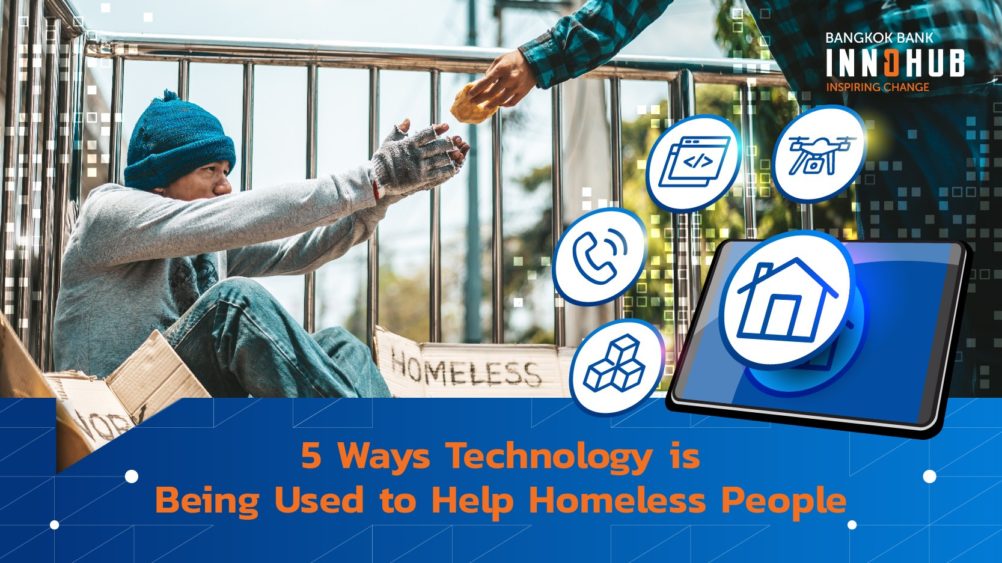The past 100 years have brought the world its greatest-ever economic prosperity and by far the biggest increase in living standards. More than anything else, technology has served as the engine for this growth — from the medicine and sanitation that help people live long and healthy lives, to the large-scale energy production and manufacturing plants that drive global trade.
Still, the ongoing wave of progress has not benefited everyone equally, and around 2% of the world’s population remain homeless even today. Moreover, the business community tends to put greater focus on addressing the needs of the middle and upper classes of society, since they have more money to spend on goods and services.
But several new initiatives in various countries are beginning to give relief to homeless people, and once again it is technology that makes these efforts possible. Below we review five of the most impressive, and impactful, ways that technology is improving life for people who have no place to live.
1) Mini modular homes
Small, cheap, and fast to assemble, these modest housing units are available in both standard and 3D-printed varieties. A study found that such homes in Cambridge, England were no more expensive than the amount of public money typically spent on a single person sleeping on the street over the course of a year. Beyond providing some measure of shelter and safety, these pop-up homes also reduced drug and alcohol abuse while improving the mental and physical health of their occupants, thereby making it easier for them to re-enter productive society.
The Indian government, in partnership with private businesses, has committed to building tens of millions of such homes for its citizens this decade. And in Malawi and Kenya, a 3D-printed house can be made in 12 hours, for less than $10,000, while also reducing CO2 emissions by 70% when compared to a standard home construction project. Other effective (but less technologically advanced) solutions along these lines involve turning shipping containers into homes, then stacking them atop each other to create makeshift apartment complexes.
2) Blockchain-based digital identities
Many homeless people have difficulty acquiring and maintaining identity papers. They may not have a driver’s license or national ID card, or may have lost them while living on the streets. Without ID, it can be very difficult to access services, including healthcare or a bank account — or even get a job at all.
Blockchain technology can create secure digital IDs for homeless people, giving them a portable and verifiable identity that can be used to access social services and other resources. Such a step can help reduce the barriers that homeless people face when trying to receive help.
3) Mobile technology
Publicly accessible Wi-Fi access and charging points could give homeless people better access to social services, as well as a better quality of life. By enabling constant access to the digital world, such services could help homeless people find resources, apply for jobs online, and maintain valuable connections with the community around them.
4) Software that monitors and analyzes homeless populations
Technology is empowering in the hands of the people, but it can also be used by city governments looking to better understand the lives of their homeless populations.
Cities like San Francisco are asking their homeless populations to participate in surveys that cover their current lives, medical histories, and daily behaviors. The city then uses software to identify patterns in the data, generating insights that can be used to improve services and allocate resources more effectively. This use of technology can help fill the gaps within local welfare systems, providing extra support to some of the world’s most vulnerable populations.
5) Drones that locate homeless people in remote areas
A charity in Lincolnshire, England, is using drones to find homeless people who are living in remote areas and might otherwise go unnoticed by local governments. Such efforts help ensure that people who are sleeping outdoors in hard-to-reach places can receive the support they need. This initiative is especially important because people in remote locations often have no reliable access to welfare services.
Prevention is the best medicine
It is worth remembering that these technological applications, though very important, essentially serve as a band-aid atop a larger problem. While society needs immediate ways to alleviate the struggles associated with homelessness, a longer and more stable solution is to help people before they become homeless in the first place.
Unfortunately, this is one problem that technology cannot solve — at least not on its own. As the issue of homelessness has many causes, its prevention will require many solutions. These include strengthened community bonds, more holistic approaches to education, a more effective welfare system, and more accessible forms of mental health support. Technology may facilitate some or all of these initiatives, but even more important is the will to make them work.




